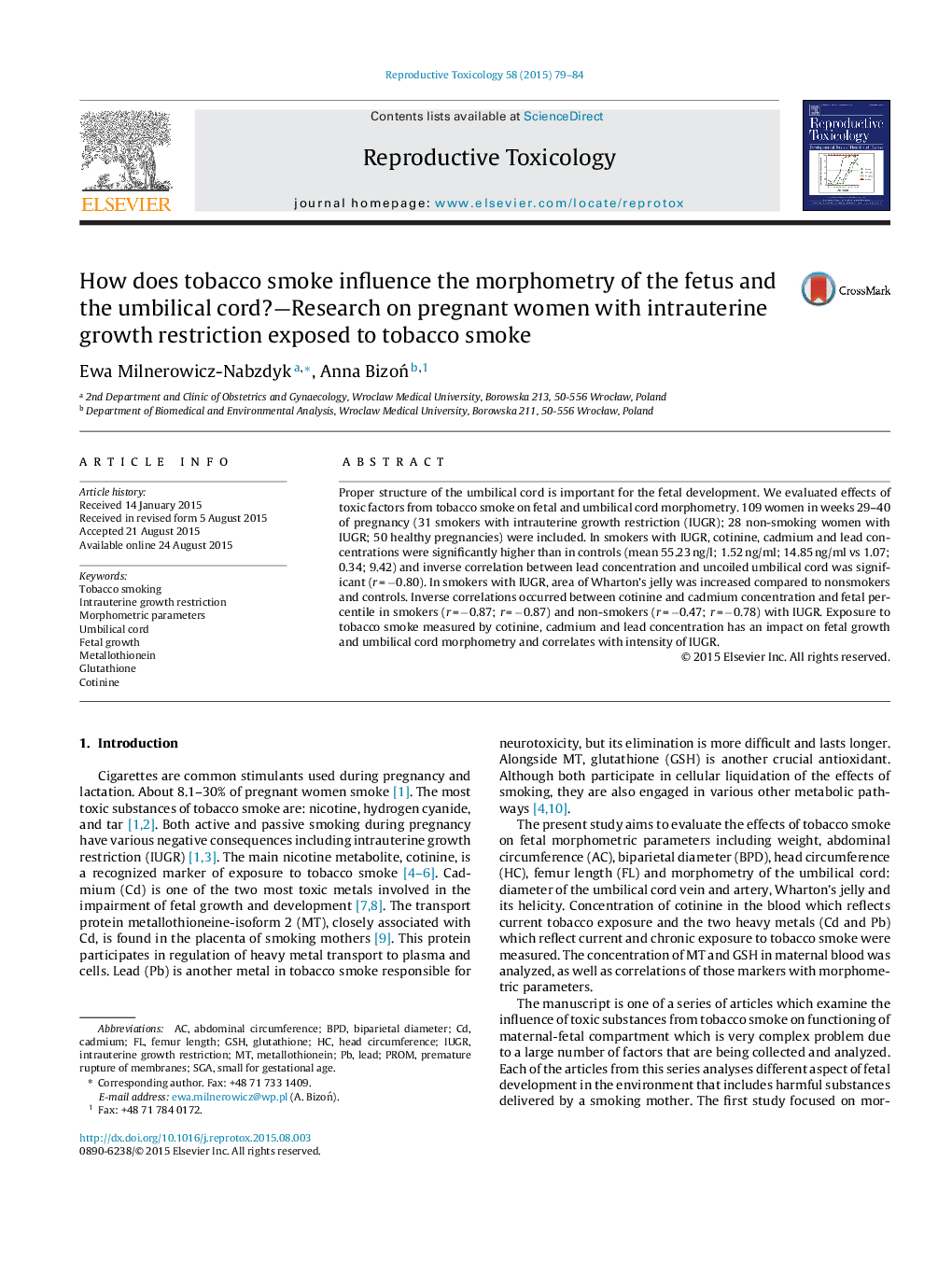| Article ID | Journal | Published Year | Pages | File Type |
|---|---|---|---|---|
| 5858049 | Reproductive Toxicology | 2015 | 6 Pages |
â¢Smokers with IUGR had higher concentrations of cotinine and heavy metals.â¢In smokers with IUGR the area of Wharton's jelly was increased.â¢Positive correlation between the area of Wharton's jelly and Cd in smokers with IUGR.â¢Inverse correlation between lead and uncoiled umbilical cord occured in smokers with IUGR.â¢Intensity of IUGR correlated with increased exposure to tobacco smoke.
Proper structure of the umbilical cord is important for the fetal development. We evaluated effects of toxic factors from tobacco smoke on fetal and umbilical cord morphometry. 109 women in weeks 29-40 of pregnancy (31 smokers with intrauterine growth restriction (IUGR); 28 non-smoking women with IUGR; 50 healthy pregnancies) were included. In smokers with IUGR, cotinine, cadmium and lead concentrations were significantly higher than in controls (mean 55.23 ng/l; 1.52 ng/ml; 14.85 ng/ml vs 1.07; 0.34; 9.42) and inverse correlation between lead concentration and uncoiled umbilical cord was significant (r = â0.80). In smokers with IUGR, area of Wharton's jelly was increased compared to nonsmokers and controls. Inverse correlations occurred between cotinine and cadmium concentration and fetal percentile in smokers (r = â0.87; r = â0.87) and non-smokers (r = â0.47; r = â0.78) with IUGR. Exposure to tobacco smoke measured by cotinine, cadmium and lead concentration has an impact on fetal growth and umbilical cord morphometry and correlates with intensity of IUGR.
